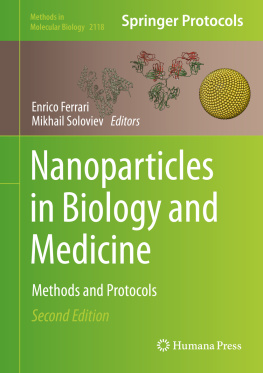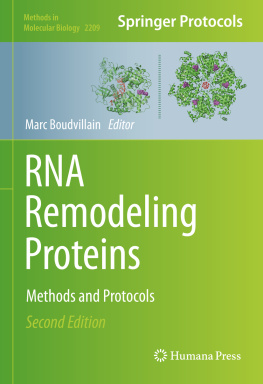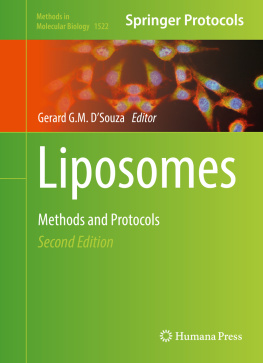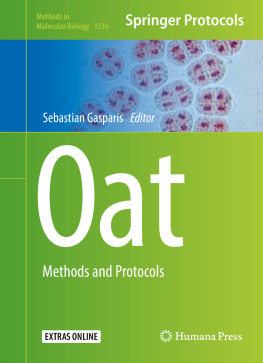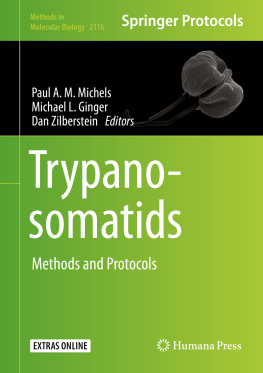Enrico Ferrari - Nanoparticles In Biology And Medic: Methods and Protocols
Here you can read online Enrico Ferrari - Nanoparticles In Biology And Medic: Methods and Protocols full text of the book (entire story) in english for free. Download pdf and epub, get meaning, cover and reviews about this ebook. year: 2020, publisher: Human, genre: Home and family. Description of the work, (preface) as well as reviews are available. Best literature library LitArk.com created for fans of good reading and offers a wide selection of genres:
Romance novel
Science fiction
Adventure
Detective
Science
History
Home and family
Prose
Art
Politics
Computer
Non-fiction
Religion
Business
Children
Humor
Choose a favorite category and find really read worthwhile books. Enjoy immersion in the world of imagination, feel the emotions of the characters or learn something new for yourself, make an fascinating discovery.
- Book:Nanoparticles In Biology And Medic: Methods and Protocols
- Author:
- Publisher:Human
- Genre:
- Year:2020
- Rating:3 / 5
- Favourites:Add to favourites
- Your mark:
- 60
- 1
- 2
- 3
- 4
- 5
Nanoparticles In Biology And Medic: Methods and Protocols: summary, description and annotation
We offer to read an annotation, description, summary or preface (depends on what the author of the book "Nanoparticles In Biology And Medic: Methods and Protocols" wrote himself). If you haven't found the necessary information about the book — write in the comments, we will try to find it.
Nanoparticles In Biology And Medic: Methods and Protocols — read online for free the complete book (whole text) full work
Below is the text of the book, divided by pages. System saving the place of the last page read, allows you to conveniently read the book "Nanoparticles In Biology And Medic: Methods and Protocols" online for free, without having to search again every time where you left off. Put a bookmark, and you can go to the page where you finished reading at any time.
Font size:
Interval:
Bookmark:
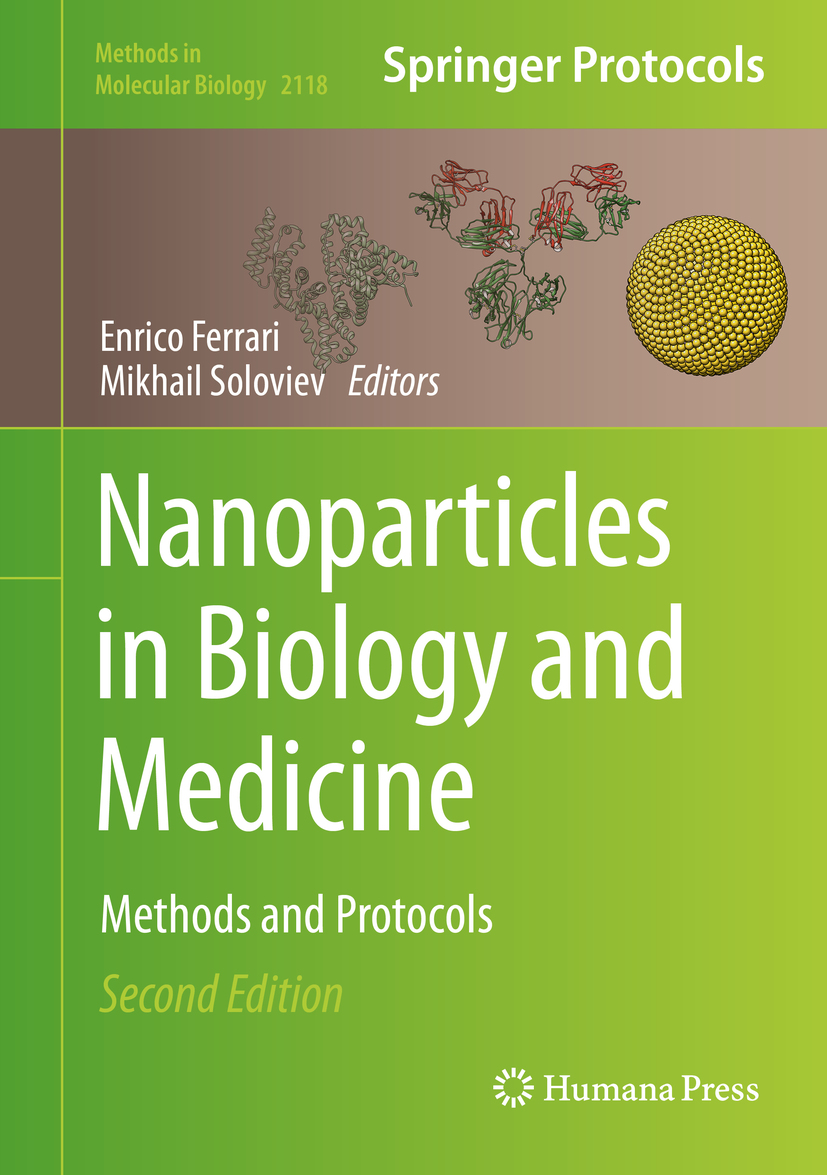
For further volumes: http://www.springer.com/series/7651
For over 35 years, biological scientists have come to rely on the research protocols and methodologies in the critically acclaimedMethods in Molecular Biologyseries. The series was the first to introduce the step-by-step protocols approach that has become the standard in all biomedical protocol publishing. Each protocol is provided in readily-reproducible step-by-step fashion, opening with an introductory overview, a list of the materials and reagents needed to complete the experiment, and followed by a detailed procedure that is supported with a helpful notes section offering tips and tricks of the trade as well as troubleshooting advice. These hallmark features were introduced by series editor Dr. John Walker and constitute the key ingredient in each and every volume of theMethods in Molecular Biologyseries. Tested and trusted, comprehensive and reliable, all protocols from the series are indexed in PubMed.

This Humana imprint is published by the registered company Springer Science+Business Media, LLC, part of Springer Nature.
The registered company address is: 233 Spring Street, New York, NY 10013, U.S.A.
The modern fascination with micro- and nano-sized materials can be traced back to the 1960s and 1970s when the first few attempts to use nanoparticles for controlled drug delivery were reported. Since then, the use of nanoparticles in biology and medicine has flourished, with a number of drug-containing nanoparticle products eventually reaching the market in the past decade. Since the early 1990s, the number of publications on nanoparticles, their properties, and their applications in chemistry, material sciences, physics, medicine, and life sciences has grown exponentially. As there is no sign of slowing down, this updated second edition to the volume first published in 2012 is essential.
The term nanoparticles refers to a very special intermediate category between atoms or molecules and bulk material. While the term could be applied to any particle with a dimension of less than 1 m, it is more commonly used to describe particles ranging from approximately 1100 nm. The uniquely small size of nanoparticles, which is of the same order as the wavelength of the electron wave function, results in quantum confinement effects and consequently in the unique chemical, physical, and optical properties of nanoscaled materials. These are especially prominent for smaller clusters made of between ~100 and ~200 atoms and having dimensions of about 3 nm, referred to as nanoclusters, where quantum confinement effects are particularly prominent. Physical properties of nanoparticles and nanoclusters differ substantially from both bulk and molecular properties of the same material. As the surface-to-volume ratio of a particle increases with the shrinking of particle size, an increasing number of individual atoms become exposed on the surface of a particle compared to the number of atoms or molecules remaining buried inside it.
The range of materials explored for their unique nanoparticles properties is vast and includes noble metals and semiconductors, inorganic and organic compounds, polymers and biopolymers, lipids and surfactants, proteins and peptides, to name just a few. The huge range of chemical properties, further expanded through the nanoscale dimensions and the additional options related to derivatization of nanoparticles for life science applications, brings about an immense array of opportunities which continue to grow. In biology laboratories, nanoparticles are now routine reagents applied to imaging (quantum dots), transfection, and in vitro labeling of biomolecules or cells. They are also key components of many diagnostic kits, for example those based on lateral flow assays, which exploit the unique optical properties of gold nanoparticles. In vivo, nanoparticles represent an extremely promising tool for medical imaging (magnetic nanoparticles and nano-bubbles) and drug delivery. Nanoparticles can significantly improve the therapeutic value of important drugs, such as those used in cancer therapy. Nano-carriers have proven successful in several contexts because they can adsorb or encapsulate large amounts of those drugs that would otherwise have poor pharmacokinetics or too elevated toxicity if used on their own. Due to the nano-carriers small size, the embedded drug can still diffuse well in tissues, undergo endocytosis, and reach the target effectively. Also, due to the many nanoparticle chemistries available, it is increasingly possible to modulate the desired biodistribution of the payload drug, derivatize the carrier with antibodies to promote accumulation in target tissues, and even combine the therapeutic effect of the drug with medical diagnostic ability (theragnostic).
This volume presents a wide range of methods for synthesis, surface modification, characterization, and application of nano-sized materials (nanoparticles) in life science and medical fields (mostly for drug delivery and diagnostics). The chapters are organized in three parts: (Part I) Synthesis of nanoparticles and their applications in biology and medicine (Chapters).
Font size:
Interval:
Bookmark:
Similar books «Nanoparticles In Biology And Medic: Methods and Protocols»
Look at similar books to Nanoparticles In Biology And Medic: Methods and Protocols. We have selected literature similar in name and meaning in the hope of providing readers with more options to find new, interesting, not yet read works.
Discussion, reviews of the book Nanoparticles In Biology And Medic: Methods and Protocols and just readers' own opinions. Leave your comments, write what you think about the work, its meaning or the main characters. Specify what exactly you liked and what you didn't like, and why you think so.

